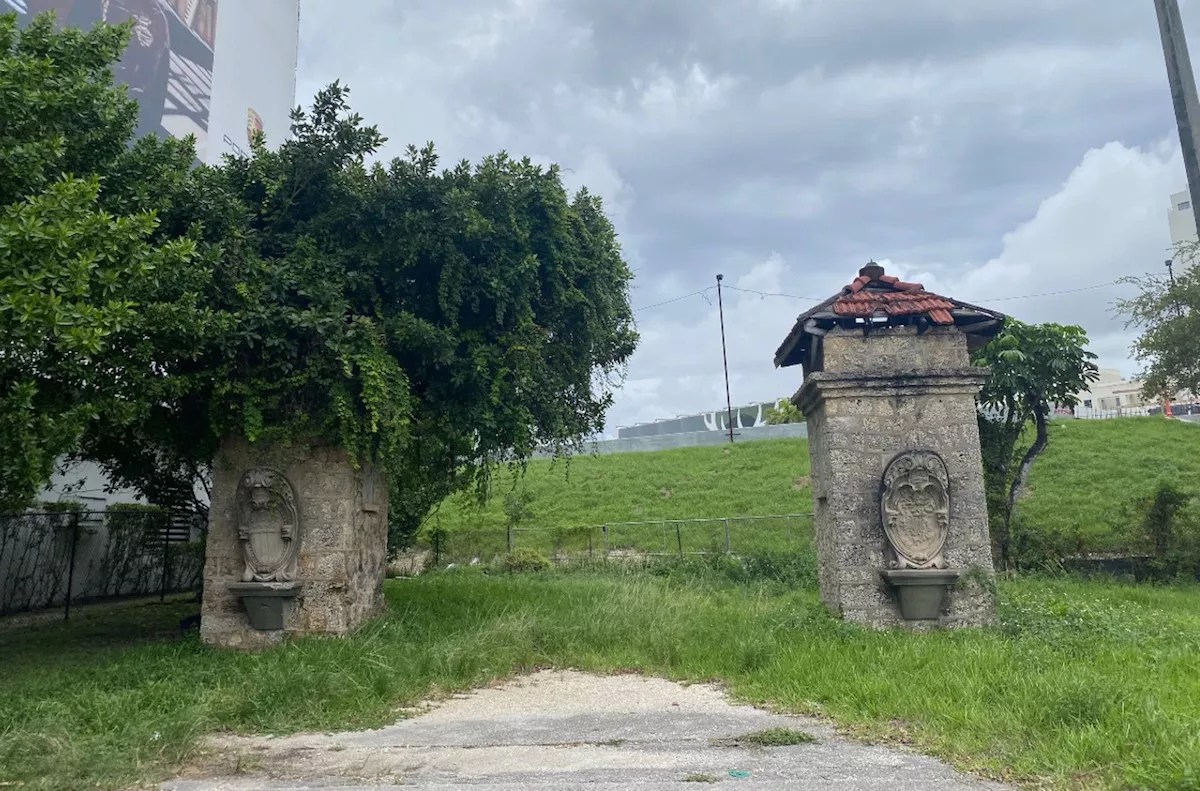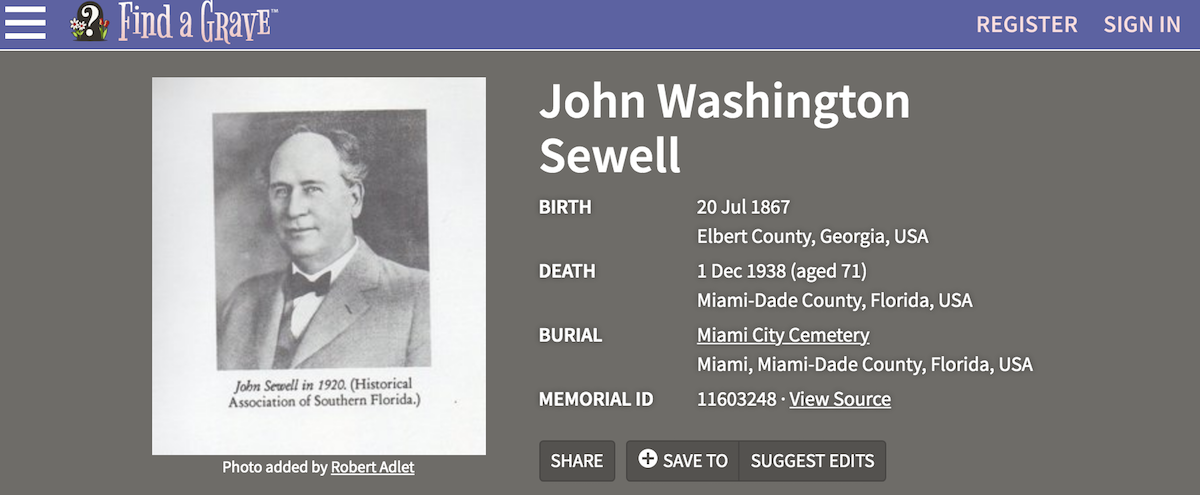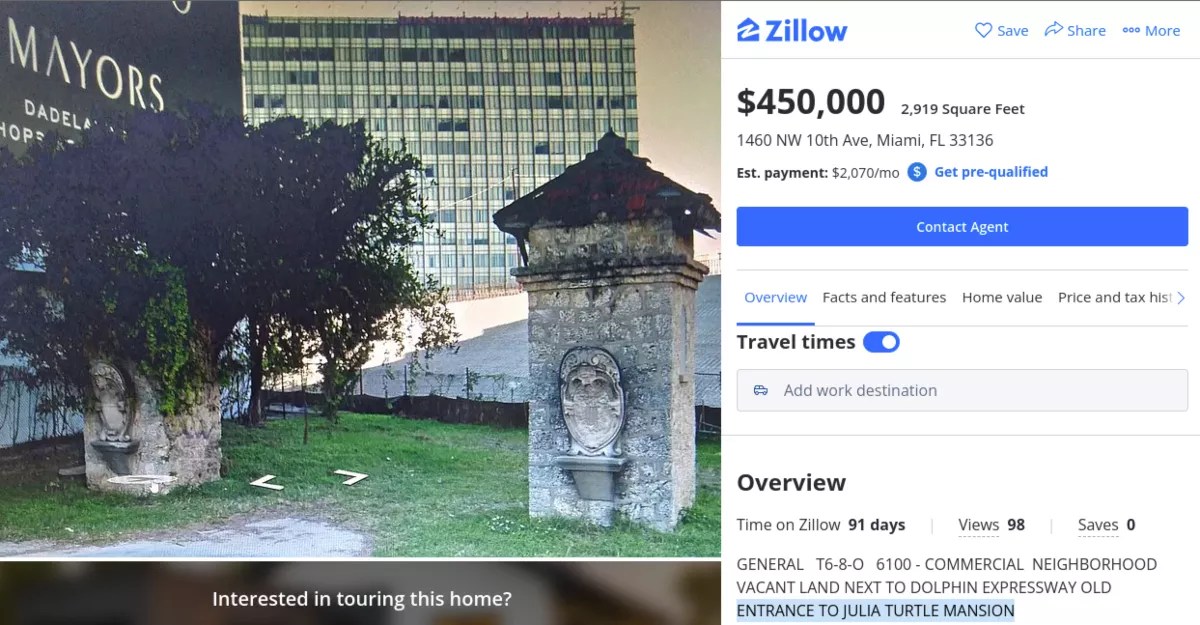
Photo by Jess Swanson

Audio By Carbonatix
Before the three-wheeled Slingshots zipped through crowded downtown streets and the Bitcoin disciples laid siege in their fantastical $600-a-month waterfront rentals, there was the “Daddy of Miami.”
Surprising nobody, history tells us that modern Miami’s earliest buildings were erected with one objective in mind: to impress.
The year is 1912. “Daddy” – his real name is John Washington Sewell (he gave himself the nickname) – a middle-aged magnate who served 1903 to 1907 as Miami’s third mayor, breaks ground on an extravagant mansion on a 46-acre plot of land not far north of the Miami River. Marking the entryway to Halissee Hall – at the highest point of the property, notes the Miami History Blog – is a pair of oolite limestone gateposts.
“He prospered and he was proud of it, and he wanted to showcase the wealth he had by building this grandiose property,” Paul George, resident historian of the HistoryMiami Museum, tells New Times.
Will you step up to support New Times this year?
At New Times, we’re small and scrappy — and we make the most of every dollar from our supporters. Right now, we’re $17,800 away from reaching our December 31 goal of $30,000. If you’ve ever learned something new, stayed informed, or felt more connected because of New Times, now’s the time to give back.

In his autobiography, John Sewell referred to himself as the “Daddy of Miami.”
The gateposts still stand today. In fact, the columns and the land upon which they sit at 1460 NW Tenth Ave. are for sale.
The asking price: $450,000, according to the listing. (The mansion itself, according to Miami History, has long since been “adaptively repurposed” into the Jackson Health complex, separated from the gateposts by the Dolphin Expressway.)
You wouldn’t know the gateposts’ true provenance, though, if you relied on the listing.

Screenshot from Zillow
“ENTRANCE TO JULIA TURTLE MANSION,” touts the property description.
Presumably, the reference is to Julia Tuttle, who’s often referred to as the “Mother of Miami.” (Owing in part to his Florida East Coast Railway and Royal Palm Hotel, Henry Flagler – John Sewell’s onetime boss – is referred to as the “Father of Miami.”)
History counts Tuttle among the city’s earliest pioneers. Despite the land having been cultivated by indigenous populations, such as the Tequesta, 1,500 years prior, she’s often credited with transforming the “wilderness” north of the Miami River into a metropolis.
But Tuttle didn’t live to see Sewell’s mansion. She died in 1898, and construction on Halissee Hall didn’t start until 1912.
When New Times reached the lot’s current owner, Alba Rodriguez of Miami Springs, by phone on Thursday, Rodriguez said the error in the description was an oversight and that she intends to revise the listing.
She also said she’s open to the idea of donating the limestone columns for historic preservation.